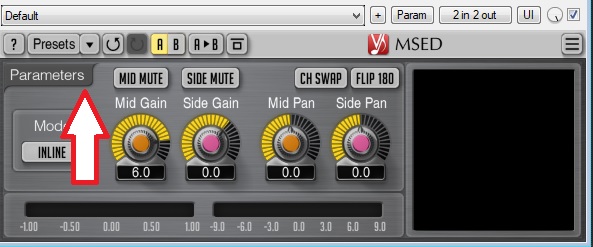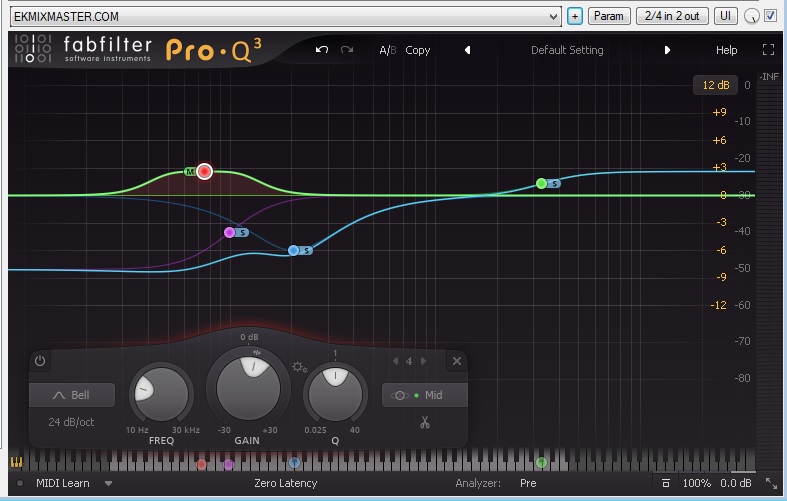There are a variety of ways to add dimension to your mix. You could utilize panning or stereo imaging plug-ins like Izotope Ozone Imager or Waves S1 Stereo Imager, however the most efficient tool employed by many audio engineers is mid side processing. It gives you the ability to alter the space and dimension of your mix. Mid side processing represents a flexible method widely used in the mastering and mixing process. It gives you an opportunity to split a stereo signal into two channels: the mid and the side. This powerful instrument may help you add dimension and clarity to your sound, allowing you to take your music to another level. However, the underlying concepts of this process are difficult to grasp. Today, we'll go over a few examples, talk about what is mid-side processing, why it is important, how and when to use it.
How does mid-side processing work?
The M/S processing is derived from a recording method invented in the 20th century. This method was aimed at emulating how people perceive the stereo sound. It was first applied during the recording process to create the illusion of space.
Nowadays, every artist wants their mix to have a lot of space because it makes the track more impactful. A mix might sound bright and clear but adding a rich sound to it will improve the listening experience by making each sound distinct and bringing out each layer of the song. This technique makes the mix sound professional and polished. A mix may appear bright and clear. This method gives the mix a polished and professional appearance.
Now let’s go through specific examples
As we all know the stereo field has two channels: the mid channel is situated in the center of the stereo field. So if we enhance its volume it will have less dimensional spread and will sound like a mono signal.

The side channel brings out more information about the overall sound image. If we bring up the side channel the sound will become rich and will have more stereo spread. If we isolate this channel completely we will hear mainly the sound on the edges of the stereo field.

Using such tools as compressor, limiter or EQ to modify the tone or dynamic range of the sound usually affects both channels at the same time. But some tools that support M/S processing (like equalizer) allow you to work with both channels individually. With simple M/S processors you can control the volume and of each channel. For example, with the M/S compressor you can set different threshold, gain or knee for both channels.
Mid side EQ is perhaps the most frequently used type of M/S processing. This form of EQ is highly handy since it allows you to deal with a specific instrument in the mix without impacting the rest of the elements. It also enables you to separate conflicting frequencies by giving you total control over the sound's position in the stereo space. It can also help with the track's excessive boominess by trimming the lows of the snare drum and the bass on the sides. If you minimize the lows of the bass on the sides, the mix will sound more cohesive and energetic. If you leave them untouched or raise them the sound will become more natural and wide.
How to use M/S processing and achieve desired results?
Let’s say you have a drum-loop recorded in stereo. This drum loop may contain snare drums in the middle of the stereo field and percussion on the sides. The mid side processing method can let you increase or decrease percussion brightness without touching the bass or snare. You may also transform the signal recorded with excess reverberation. Such a signal exists mainly on the sides so by reducing the volume on the sides you can significantly reduce the audibility of the reverb.
Recommended articles:
- ADDING DYNAMICS TO A MIX IN 1 STEP
- HOW TO MASTER MUSIC LOUDER AND WITH MORE COLOR
- HOW TO ADD PUNCHINESS TO A KICK DRUM
- HOW TO MIX ELECTRONIC DANCE MUSIC LOUD AND CLEAN
Tips for M/S mastering
Mastering engineers frequently use M/S processing in their work. Normally, it’s hard to alter the flaws of the mix or adjust its balance while mastering. The mid-side EQ, on the other hand, might help you isolate the aspects you wish to accentuate or reduce. For example, you can emphasize the punch of the 808s, the airiness and reverb of the snare or the pulse of the bass. Low-shelf filters may come in handy if your mix has too much lows. It will trim the lows and help you get rid of muddiness on the sides without muffling the lows in the mid channel.

In most cases, you can't fix problems in the mix or modify the balance when mastering. The mid-side EQ, on the other hand, may assist you in isolating the elements you want to emphasize or minimize. For example, you may the 808s' punch, the snare's airiness and reverb, or the bass' pulse. If your mix contains too many lows, low-shelf filters may be useful.
Another problem you may run into during the mastering process is the compressor that crushes the widespread components of the mix. This problem usually occurs when there are a lot of loud instruments in the center of the stereo space. They trigger the compressor which in turn narrows the sound. To eliminate this issue consider editing the mid and side channels separately using an M/S compressor. Using this method you can adjust the compressor settings for each channel individually.
To liven up an acoustic mix you may try M/S reverb. Adding it to the center with a high-pass filter and on the sides with a little bit more reverb and no filter will create an illusion of big, open space.
I hope that now you have a better understanding of creative mid side processing and how to use it to give your mix more room, make it sound professional and polished.
Any specific topic that you'd want to learn about?
Any other questions?
Feel free to ask - I'd love to help!
